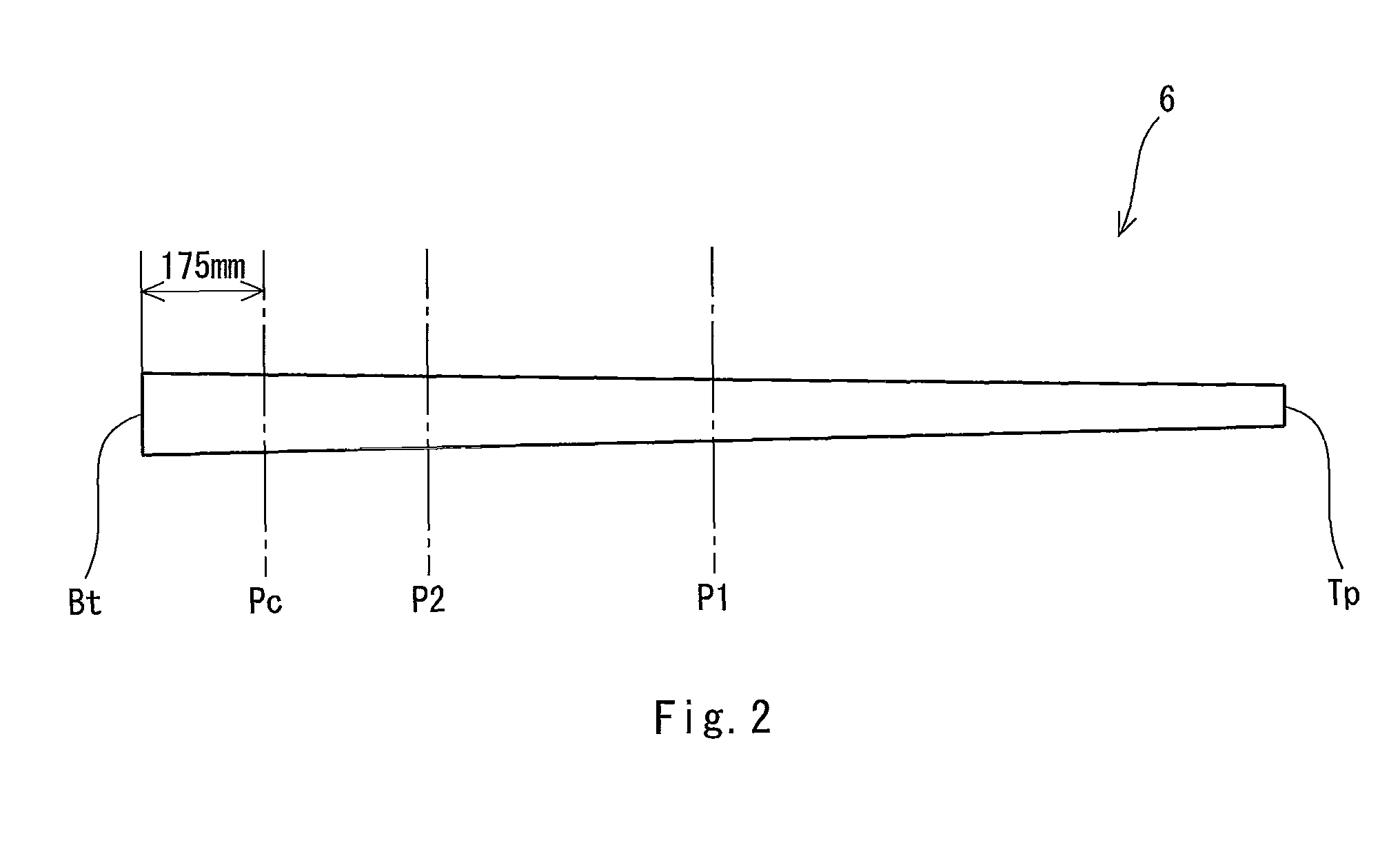Golf club shaft
a golf club and shaft technology, applied in the field of golf club shafts, can solve the problems of deteriorating the directivity of hit balls, and achieve the effects of accelerating the head speed, large flexure amount, and large flexur
- Summary
- Abstract
- Description
- Claims
- Application Information
AI Technical Summary
Benefits of technology
Problems solved by technology
Method used
Image
Examples
example 1
[0095]A shaft was produced by a sheet winding method. A plurality of prepregs were wrapped around a metal mandrel to be laminated. The developed view of the laminated prepregs is shown in FIG. 3. Nine prepregs were wrapped around the mandrel (not shown) in order of a prepreg s1, a prepreg s2, . . . , a prepreg s9. The prepreg shown on a higher side in FIG. 3 was laminated on the inner side.
[0096]The prepreg s1 is a layer which reinforces a tip part of the shaft. In the prepreg s1, the orientation angle of a fiber is substantially 0 degree to the axial line of the shaft. That is, the prepreg s1 constitutes a straight layer. The prepreg s2 is provided over the full length of the shaft. The prepreg s2 is so-called a bias layer. In the prepreg s2, the orientation angle of a fiber is substantially −45 degrees to the axial line of the shaft. A prepreg s3 is also provided over the full length of the shaft. The prepreg s3 is so-called a bias layer. In the prepreg s3, the orientation angle o...
example 2
[0099]The developed view of a shaft of Example 2 is shown in FIG. 4. In Example 2, nine prepregs e1 to e9 were used. The varieties of the prepregs of Example 2 are shown in Table 2. A shaft and a golf club according to Example 2 were obtained in the same manner as in Example 1 except that the compositions of the prepregs shown in FIG. 4 and Table 2 were used. Even in Example 2, the shaft was subjected to surface polishing so as that a point separated by 720 mm from a tip Tp of the shaft was a thinnest part.
PUM
 Login to View More
Login to View More Abstract
Description
Claims
Application Information
 Login to View More
Login to View More - R&D
- Intellectual Property
- Life Sciences
- Materials
- Tech Scout
- Unparalleled Data Quality
- Higher Quality Content
- 60% Fewer Hallucinations
Browse by: Latest US Patents, China's latest patents, Technical Efficacy Thesaurus, Application Domain, Technology Topic, Popular Technical Reports.
© 2025 PatSnap. All rights reserved.Legal|Privacy policy|Modern Slavery Act Transparency Statement|Sitemap|About US| Contact US: help@patsnap.com



